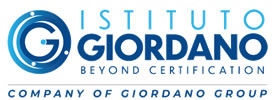
SECTION CONTACTS
Giombattista Traina
Tel. 0541 322.349
E-mail g.traina@giordano.it
EN 45545-2 Reaction to fire for the railway sector
Fire Test Methods and Classification According to EN 45545-2
The European standard EN 45545 defines the mandatory requirements for fire protection in railway vehicles, with the aim of ensuring the safety of passengers and staff through measures to prevent, control, and limit the consequences of fires.
Mandatory across Europe since 2016, it applies to various types of railway vehicles, such as high-speed trains, regional trains, subways, trams, and double-decker trains.
The standard is divided into seven parts, each dedicated to specific aspects of fire safety.
EN 45545-1 outlines general principles and vehicle classification, dividing vehicles into operational categories (OC1–OC4) and design categories (e.g., automatic vehicles without staff on board, double-decker vehicles, vehicles with sleeping compartments).
It defines three hazard levels (Hazard Level HL1, HL2, HL3), establishing specific testing methods and conditions, as well as performance criteria regarding flammability, heat release, smoke production, and toxic gas emissions.
Furthermore, it classifies materials into different groups (interior, exterior, furnishings, electrotechnical and mechanical equipment), assigning specific performance requirements ranging from R1 to R28.
Istituto Giordano carries out testing and certification in accordance with EN 45545, supporting companies and manufacturers in verifying compliance and obtaining the certifications required to access the European railway market.
Request a quoteMandatory across Europe since 2016, it applies to various types of railway vehicles, such as high-speed trains, regional trains, subways, trams, and double-decker trains.
The standard is divided into seven parts, each dedicated to specific aspects of fire safety.
EN 45545-1 outlines general principles and vehicle classification, dividing vehicles into operational categories (OC1–OC4) and design categories (e.g., automatic vehicles without staff on board, double-decker vehicles, vehicles with sleeping compartments).
EN 45545-2
Part 2 of the standard specifies the requirements for the fire performance of materials and components used in railway vehicles.It defines three hazard levels (Hazard Level HL1, HL2, HL3), establishing specific testing methods and conditions, as well as performance criteria regarding flammability, heat release, smoke production, and toxic gas emissions.
Furthermore, it classifies materials into different groups (interior, exterior, furnishings, electrotechnical and mechanical equipment), assigning specific performance requirements ranging from R1 to R28.
Istituto Giordano carries out testing and certification in accordance with EN 45545, supporting companies and manufacturers in verifying compliance and obtaining the certifications required to access the European railway market.












 Do you need more information about our services?
Do you need more information about our services?